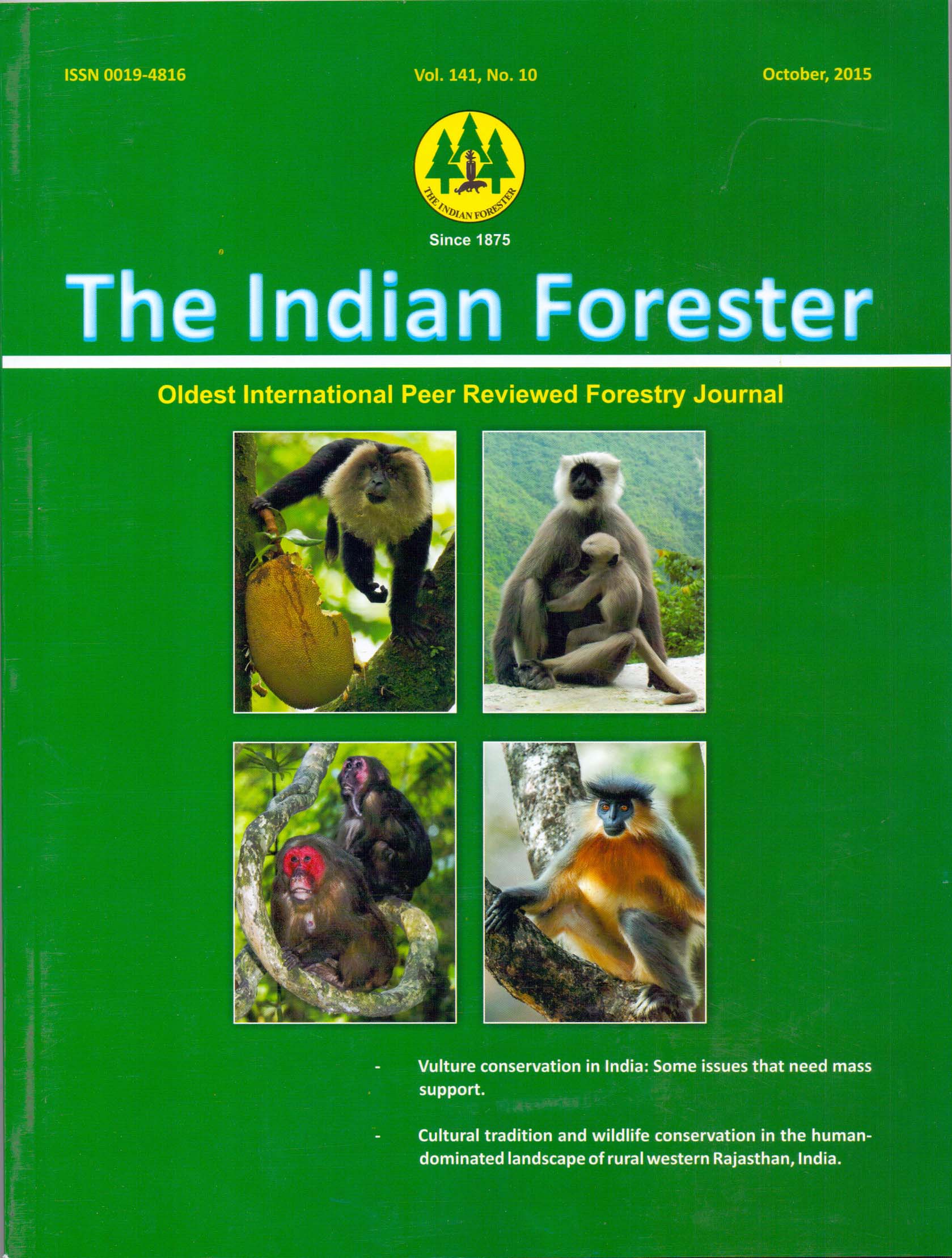Study on Avifaunal Diversity and Species Richness in Foot Hills of Nilgiris, Tamilnadu, India
DOI:
https://doi.org/10.36808/if/2015/v141i10/80663Keywords:
Birds Diversity, Species Richness, Nilgiris, Bird Community.Abstract
A total of 87 bird species belonging to 13 orders and 31 families of terrestrial and semi-aquatic birds were identified and recorded during the study. The highest population of bird species recorded during the month of January followed by December. The maximum number of birds was observed of the corvidae family (11 species) followed by columbidae (6 species) and passeridae (6 species). The highest diversity of 4.19 was observed in the month of January followed by 4.17 in the month of February and 4.15 in the month of April. Species richness was highest in the month of January followed by February and least in April. This study illustrated useful information on bird diversity in the study region which serves as a baseline for future monitoring programs.References
Ali S. (2002). The Book of Indian Birds (13th Revised Edition). Oxford University Press, New Delhi, 326pp.
Ali S. and Ripley S.D. (1983). Hand Book of Birds of India and Pakistan. Oxford university press, Delhi, pp. 110–112.
Begon M., Harper J.L. and Townsend C.R. (1996). Ecology: individuals, populations, and communities. Blackwell Science, London, 945pp.
Clements James F. The Clements., (2007). Checklist of Birds of the World (6th ed.). Ithaca: Cornell University Press., ISBN 978-0-8014-4501-9.
Ehrlich P.R. and Wilson E.O. (1991). Biodiversity studies: science and policy. Science 253: 758–762.
Furness R.W. and Greenwood J.J.D. (1993). Birds as a Monitor of Environmental Change.Chapman and Hall, London.
Grimmet R., Inskipp C and Inskipp T. (1999). Pocket guide to the Birds of Indian Subcontinent. Oxford University Press, New Delhi. 384pp.
Hussain K.J., Ramesh T., Satpathy K. and Selvanayagam M. (2011). A checklist of birds of Department of Atomic Energy Campus, Kalpakkam, Tamil Nadu.ZOO's Print., 25 (7), 13-20
Jayson E.A., (1994). Synecology and behavioural studies on the forest birds of Kerala.PhD Thesis, University of Calicut, Calicut, 314pp.
Kattan G.H. and Franco P. (2004). Bird diversity along elevational gradients in the Andes of Colombia: area and mass effects. Global Ecology and Biogeography, 13: 451–458.
Kazmierczak K. and Perlo B.V., (2000). A Field Guide to the Birds of the Indian Subcontinent. Yale Univer-sity Press, 352pp.
Lawton J.H., Bignell D.E., Bolton B., Bloemers G.F., Eggleton P., Hammond P.M., Hodda M., Holt R.D., Larsen T.B., Mawdsley N.A., Stork N.E., Srivastava D.S. and Watt A.D. (1998). Biodiversity inventories, indicator taxa, and effects of habitat modification in tropical forest.Nature, 391: 72–76.
Lee P.F., Ding T.S., Hsu F.H. & Geng S. (2004). Breeding bird species richness in Taiwan: distribution on gradients of elevation, primary productivity and urbanization. Journal of Biogeography, 31: 307–314.
Naaz S., Das S.K. and Mukhopadhyay S.K. (2005). Report on the ornithological visit to Terai for-ests of the Jalpaiguri district of West Bengal. India. J. Natural History, 1(1): 79–85.
PadoaSchioppa E., Baietto M., Massa R. and Bottoni L. (2006). Bird communities as bioindicators: The focal species concept in agricultural landscapes. Ecological Indicators, 6(1): 83–93.
Praveen J. and Joseph J.K. (2006). A checklist of birds of the National Institute Technology Campus, Kozhikode, Kerala.Zoos' Print Journal,21(6): 2298–2300.
Raman T.R.S., Joshi N.V. and Sukumar R. (2005). Tropical rainforest bird community structure in relation to altitude, tree species composition, and null models in the Western Ghats, India. Centre for Ecological Sciences, Indian Institute of Science, 34pp.
Ramesh T., Sridharan N. and Kalle R. (2011). Birds of Kuno Wildlife Sanctuary, Central India. Zoo's Print,26(12): 25–29.
Recher H.F. and Davis W.E. (2002). Foraging profile of a Salmon Gum woodland avifauna in Western Australia. Journal of Royal Society of Western Australia, 85: 103–111.
Roy U.S., Pal A., Banerjee P. and Mukhopadhyay S.K. (2011). Comparison of avifaunal diversity in and around Neora Valley National Park, West Bengal, India. Journal of Threatened Taxa, 3(10): 2136–2142.
Sandilyan S. (2009). Habitat quality and water bird utilization pattern of Pichavaram wetlands southern India.Ph.D. Thesis, Bharathidasan University, Tiruchirapalli, India.
Sandilyan S., Thiyagesan K. and Nagarajan R. (2010). Major decline in species-richness of waterbirds in the Pichavaram mangrove wetlands, southern India.Wader Study Group Bull,117(2): 91–98.
Shannon C.E. and Weaver (1949). The mathematical Theory of communication.Urbana University, Illinois press. pp. 117
Sekercioglu and CaganHakki.Handbook of Birds of the World. In JosepdelHoyo, Andrew Elliott and David Christie (eds.), (2006). Volume 11: Old World Flycatchers to Old World Warblers. Barcelona: Lynx Edicions, ISBN 84- 96553-06-X.
Urfi A.J., (2005). Counting birds in India: Methodologies and Trends. Cur. Sci., 89 (12): 1997-2003.
Van Strien A.J. (1997). Biodiversity declining in the Netherlands: an indicator to describe the changes in the number of wild species. Netherlands Official Statistics, Winter, 45-49.
Downloads
Downloads
Published
How to Cite
Issue
Section
License
Unless otherwise stated, copyright or similar rights in all materials presented on the site, including graphical images, are owned by Indian Forester.





